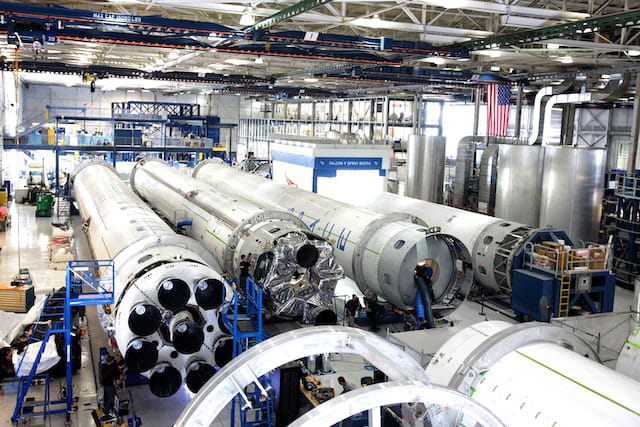
Precision and efficiency are crucial in the manufacturing industry. Your ability to manufacture high-quality goods while minimizing waste, cutting expenses, and satisfying client requests will determine how successful your organization is. You must continuously optimize your production process if you want to meet these objectives. Here are five crucial procedures to follow in order to optimize your manufacturing process.
1. A Thorough Process Analysis
A detailed review of your present operations is the first step towards streamlining your production process. This entails investigating each step of your production chain, from the sourcing of raw materials through product delivery. Find inefficiencies, bottlenecks, and potential improvement areas for quality control. Consider using approaches like process mapping and value stream analysis to do this efficiently. You may visualize your process with the aid of these tools and spot potential improvement areas. Include your staff in the analysis as well; they frequently have insightful observations from their everyday experiences on the work floor.
2. Adopt the Principles of Lean Manufacturing
Lean manufacturing is a philosophy aimed at streamlining procedures and reducing waste. You may greatly increase productivity and save expenses in your manufacturing process by taking into account the following key lean techniques.
- Produce only what is required, when it is required, using the just-in-time (JIT) method to reduce extra inventory and storage expenses.
- Kaizen (Continuous Improvement): Encourage your staff to look for opportunities to make procedures better, even in tiny ways.
- To save time looking for equipment or supplies, organize and tidy the workstation using the 5S method (Sort, Set in Order, Shine, Standardize, Sustain).
- Utilize visual cues and signals in kanban systems to control inventory and production flow.
- Total Productive Maintenance (TPM) is the process of maintaining machinery and equipment to avoid breakdowns and downtime.
3. Make Technology and Automation Investments
Technology is essential to the current production environment since it helps to streamline operations. Your operations can be revolutionized by automation, data analytics, and digital technologies. Consider the following:
- Systems for Manufacturing Execution (MES): These tools provide helpful information for enhancing procedures while monitoring production in real time.
- IoT (Internet of Things) Sensors: These sensors can track the functioning of equipment and send out notifications for preventative maintenance, which minimizes downtime.
- Robotics: Automated robotic systems are able to precisely execute repetitive tasks, freeing up human labor for more difficult jobs.
- Software for quality control should be used to monitor and guarantee product quality throughout the production process.
- You can enhance production rates, improve accuracy, and have better control over your manufacturing processes by combining technology and automation.
4. Engagement and Training of Employees
Your employees are an invaluable asset in your quest to optimize your manufacturing process. Investing in their training and development, such as workshops, on-the-job training, and core tools training courses, is crucial to ensuring they have the skills and knowledge needed to excel in their roles. Promote a culture of ongoing learning and development. Give workers the chance to gain knowledge about modern tools, technology, and industry best practices. Participate in efforts to solve issues and enhance processes. Employees are more likely to provide suggestions for improving effectiveness and quality if they feel empowered and respected. Make sure your team is also aware of the significance of quality control and adherence to standard operating procedures. Encourage open lines of communication so that staff members may raise concerns or make changes without being punished.
5. Regular Performance Monitoring and Feedback
Continuous improvement is an ongoing process. To ensure your manufacturing process remains optimized, establish a system for regular performance monitoring and feedback. Key steps in this phase include:
- KPIs: Key Performance Indicators Establish and monitor KPIs that are pertinent to your manufacturing process, such as output, defect rates, and downtime for equipment.
- Conduct routine audits and inspections to verify that procedures are being followed appropriately and that quality requirements are being fulfilled.
- Input Loops: Encourage employee input at all levels, as it can offer insightful information about potential opportunities for process improvement.
- Data analysis: Examine the information gathered about your production processes to spot trends and potential areas for improvement.
- Benchmarking: To make sure you stay competitive and keep improving, compare your production process to industry benchmarks.
- You can adjust to shifting market conditions and technical improvements by regularly analyzing performance and asking for input, which will keep your manufacturing process effective and competitive.
Conclusion
Although improving your manufacturing procedure is a lifelong endeavor, it may have a positive impact on productivity, financial savings, and product quality. You can improve your manufacturing process by following these five steps: conducting a thorough process analysis, adopting lean manufacturing principles, investing in technology and automation, placing a high priority on employee engagement and training, and establishing regular performance monitoring and feedback. Your company may succeed in the always-changing manufacturing industry by making a commitment to continual development.